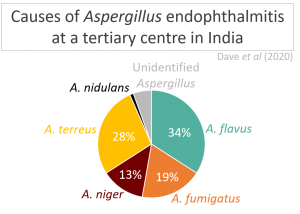Submitted by Aspergillus Administrator on 11 August 2008

In many parts of the world the diet is limited and deficient in the nutrients needed to maintain a healthy body. There are many difficulties in providing a complete diet – both for humans and for their food animals – but the one we are focusing on here is called phytate.
Phytate is sometimes referred to as an ‘antinutrient’ because it locks up phosphates and minerals into a form most animals cannot digest because they lack the enzyme needed to break up phytate , and that enzyme is called phytase.
One effect of this problem is that foodstuffs for some animals (birds & pigs) must be supplemented with phosphates in order to replace the phosphates locked up inside phytate – increasing the cost of producing meat.
There is an additional problem concerning the environment. Foodstuffs rich in phytate are corn and soybean which are routinely the staple diet of fowl and pigs. Combine the effect of supplementary phosphates (not all of which are absorbed) and all that unabsorbed phytate on the living quarters of commercially produced chickens, turkeys & other fowl along with pigs and you have a lot of phosphate pollution. Microbes produce an abundance of phytase so the phytate does not last long once on the floor! Should that rich phosphate soup make its way into river systems or onto land the result can be eutrophication – severe pollution.
Ruminants such as cows, horses, deer & sheep make their own phytase and thus do not need extra phosphates .
Phytase is made by many microbes including Aspergillus, and it is known that the addition of phytase to feeds can aid uptake of phosphates along with other important minerals such as calcium, magnesium and iron. This has now been taken a step further and instead of adding phytase purified from aspergillus (which would be expensive as well as having the potential to cause health problems for people allergic to aspergillus), the phytase gene has been extracted from aspergillus and inserted directly into the crop DNA. When expressed alongside another gene from soybean called ferritin the resultant transgenic crop has far higher nutritional value without the need for supplements.
The potential for this technology has several benefits including for the environment, food safety and for the improvement of the diet of humans and animals. Whether or not foods manipulated in this way will enter the foodchain is a topic for a different column!
News archives
-
Title
Date


